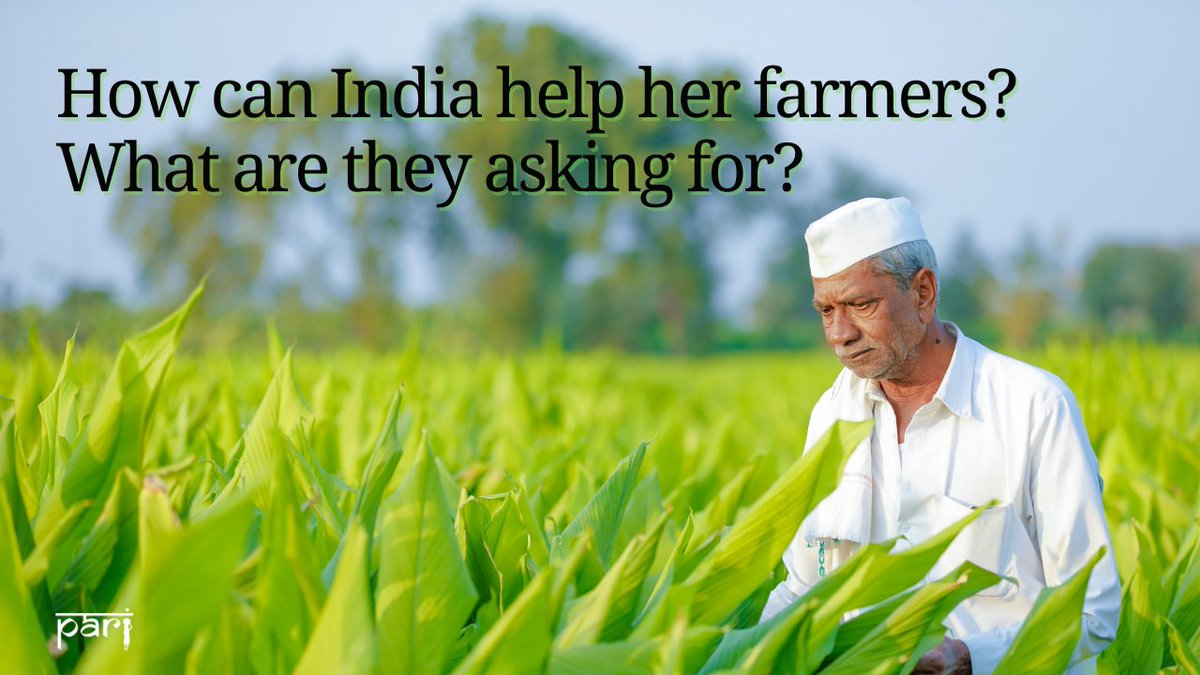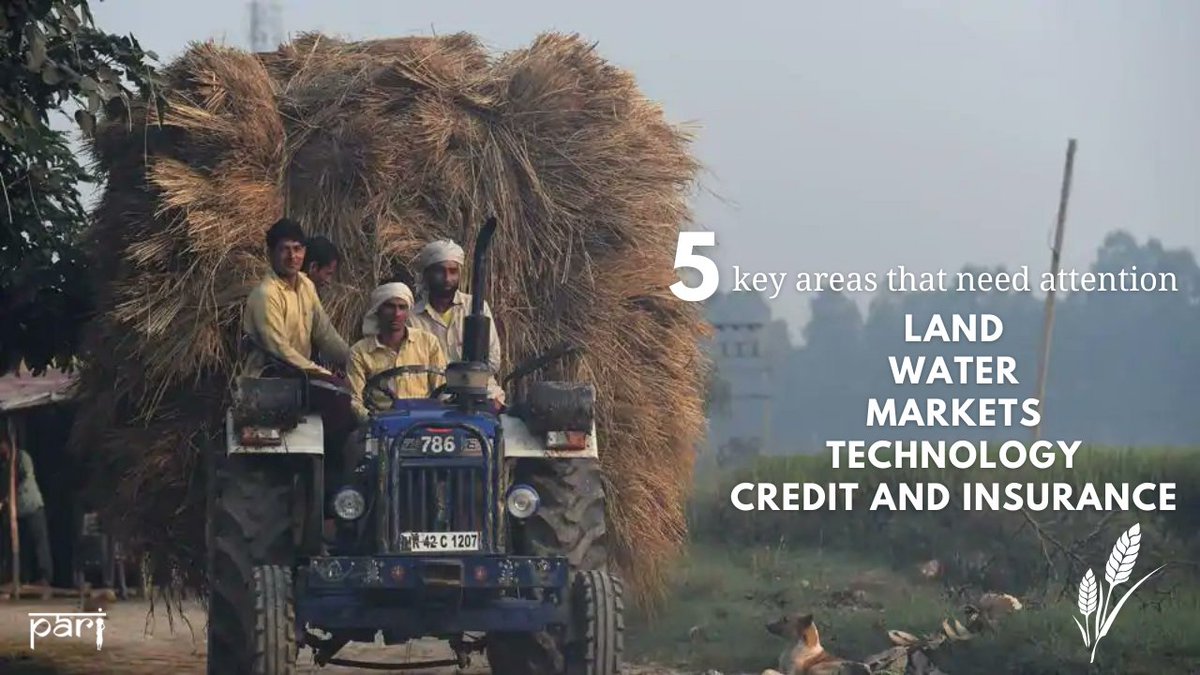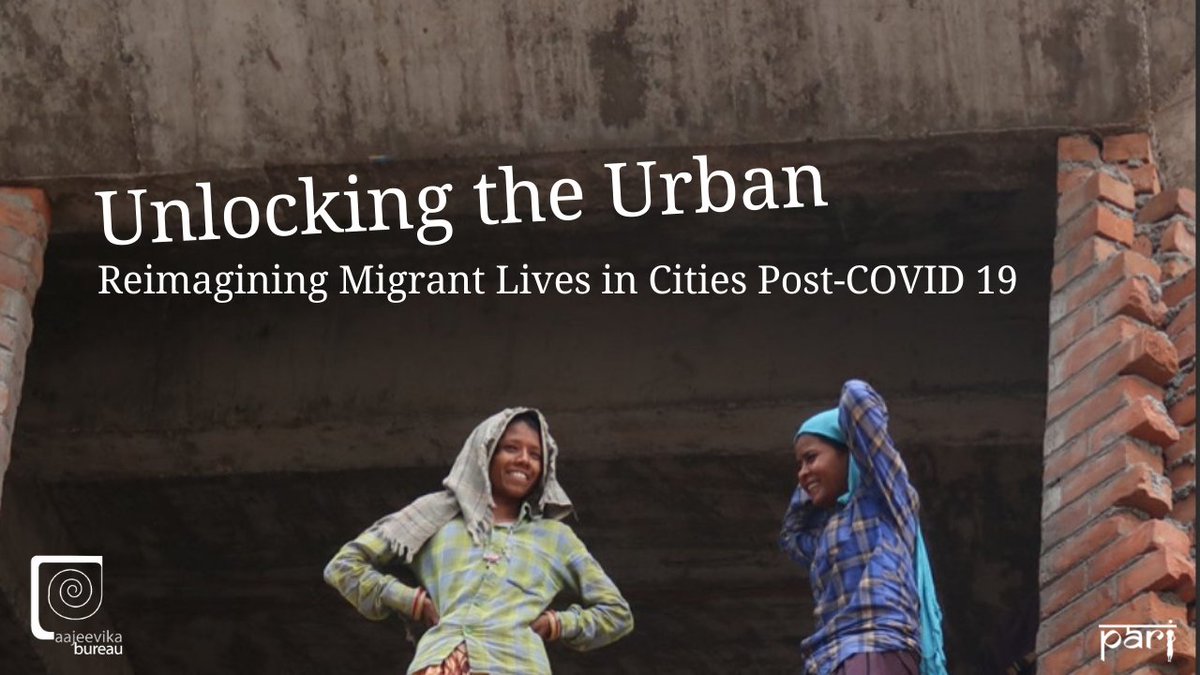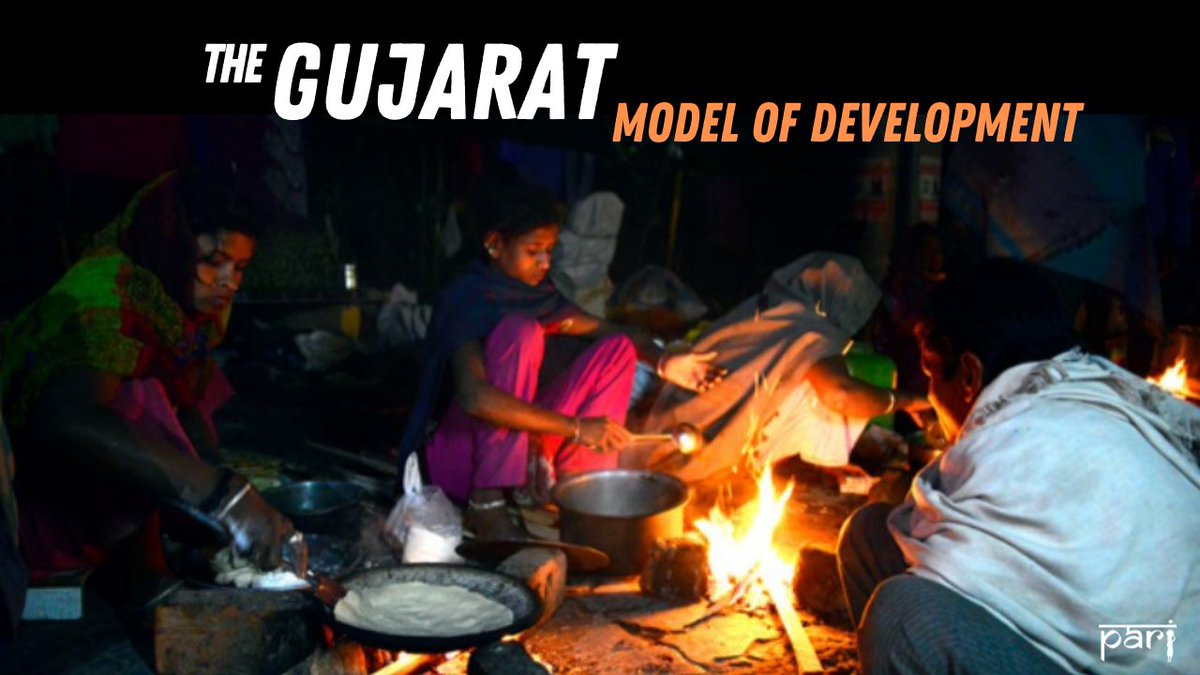
Indian women's under-rated role in agriculture[thread]
81% of Indian women workers are cultivators, labourers & small livestock handlers. Women are barred from ploughing but they almost exclusively perform transplanting, weeding, harvesting, threshing
ruralindiaonline.org/en/articles/vi…
81% of Indian women workers are cultivators, labourers & small livestock handlers. Women are barred from ploughing but they almost exclusively perform transplanting, weeding, harvesting, threshing
ruralindiaonline.org/en/articles/vi…
‘Manual’ planting, sowing and weeding are more than hard work. They involve a great deal of time spent in painful postures. Most of these activities mean a lot of bending and squatting. Besides, many of the tools and implements used were not designed for the comfort of women. 2/7
The work women do in the fields sees them move forward constantly while bending and squatting. So, severe pain in the back and legs is very common. Often standing shin-deep in water during transplantation, they’re also exposed to skin diseases. 3/7
Then there’s injury from implements made for men and never refashioned for women. Injuries from sickles and machetes are common and decent medical care is rare. Tetanus is a constant threat. 4/7
High infant mortality is a big problem of such work in agriculture. During transplantation work women remain bent or squatting for much of the day. A study in Maharashtra showed that this is the period which sees the highest number of miscarriages and infant deaths. 5/7
Also, women workers don’t get to eat enough. Their general poverty ensures this. And the custom of serving the family first and eating last worsens it. Pregnant women don’t get to eat any better, though they need to. 6/7
Since the mothers are anyway under-nourished, premature babies are too underweight to survive. So women agricultural workers are caught up in a cycle of repeated pregnancies and high infant mortality, which further devastates their health. 7/7
• • •
Missing some Tweet in this thread? You can try to
force a refresh













